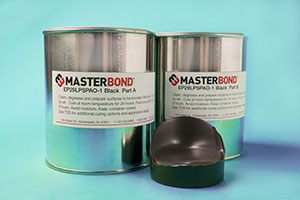 Researchers document the use of Master Bond EP29LPSPAO-1 Black in the construction of optical-fiber-coupled photodiode arrays for use at cryogenic temperatures. Paired with a Josephson junction array (JJA), the photodiode module provides a means to deliver the input signal via laser pulse to the JJA without direct electrical link to the pulse pattern generator. Devices like JJA require cryogenic temperatures to exhibit superconducting properties. During operation, these devices face extreme temperature swings—from 4K to 300K (room temperature)—necessitating careful selection of all materials to minimize thermal stresses. The authors report both empirical and simulation-based results showing the feasibility of constructing fiber-coupled photodiode modules needed for use with Josephson arbitrary waveform synthesizers (JAWS) circuits.
Researchers document the use of Master Bond EP29LPSPAO-1 Black in the construction of optical-fiber-coupled photodiode arrays for use at cryogenic temperatures. Paired with a Josephson junction array (JJA), the photodiode module provides a means to deliver the input signal via laser pulse to the JJA without direct electrical link to the pulse pattern generator. Devices like JJA require cryogenic temperatures to exhibit superconducting properties. During operation, these devices face extreme temperature swings—from 4K to 300K (room temperature)—necessitating careful selection of all materials to minimize thermal stresses. The authors report both empirical and simulation-based results showing the feasibility of constructing fiber-coupled photodiode modules needed for use with Josephson arbitrary waveform synthesizers (JAWS) circuits.
Application
The development of superconducting Josephson junction array (JJA) circuits has had a profound impact on the field of electrical metrology.1 Applications include precise AC voltage calibration, arbitrary impedance comparison, and AC power measurements. Fundamentally, the SI definition for the volt is defined by the Josephson effect.2 Initial implementations used microwave frequency to excite the JJA to produce a DC voltage. Current research seeks to expand the capabilities of these devices to include the synthesis of AC and arbitrary voltage waveforms using Josephson Arbitrary Waveform Synthesizers (JAWS).

For the device to reach a superconductive state, it must operate at cryogenic temperatures. Engineering a reliable device capable of thermal cycling between ambient temperature and cryogenic temperatures as low as 4K requires careful selection of materials. The circuits include various materials of construction including silicon dies, organic PCB substrates, solder/wiring components, among others. Key material properties include the coefficient of thermal expansion (CTE) as well as temperature-dependent modulus. As the device cools, the materials of construction contract at variable rates allowing stresses to build within the assembly. The die composed of silicon, a brittle material with very low CTE, may catastrophically fracture if the CTE and modulus of the adhesive and PCB substrate is not properly controlled. Thermal management is critical to microelectronic applications with cryogenic environments posing particular challenges due to the reduced compliance faced by materials at exceedingly low temperatures.
References
1Flowers-Jacobs, N. E., Rufenacht, A., Fox, A. E., et al. Development and applications of a four-volte Josephson arbitrary waveform synthesizer. Institute of Electrical and Electronics Engineers. 978-1-7281-1196-4. 2019.
2Bardalen, E., Karlsen, B., Malmbekk, H., et al. Packaging and demonstration of optical-fiber-coupled photodiode array for operation at 4K. IEEE Transactions on Components, Packaging, and Manufacturing Technology. 2156-3950. 2017.
